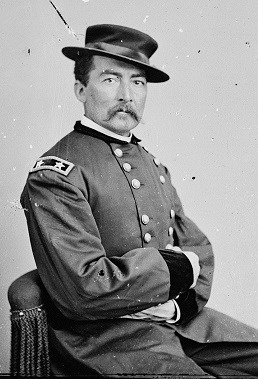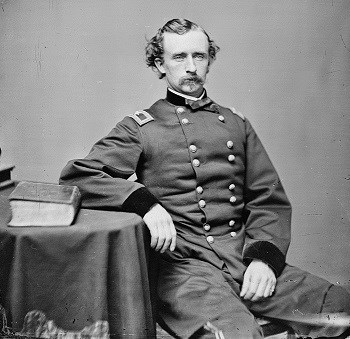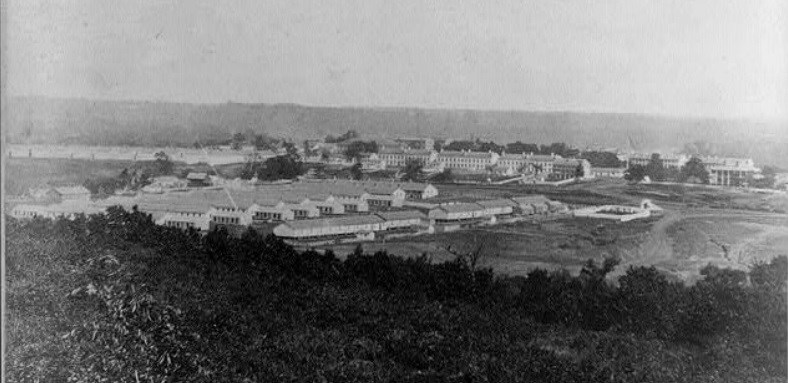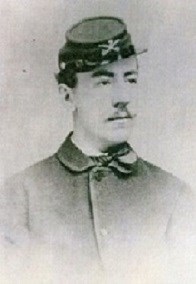
September 12th, 1867 General Phillip Sheridan would prove to be the mastermind of the Washita campaign a year later. What experiences influenced Sheridan? Before the Civil War, he had experience fighting Native Americans in the Pacific Northwest. During the Civil War, Sheridan had an active part. He led a Union army in the Shenandoah Valley campaign in 1864. Part of his orders (given by General Ulysses S. Grant), were to "Give the enemy no rest…Do all the damage to railroads and crops you can”. This type of warfare, known as total war, was a technique used to hurry the conclusion to a long and bloody Civil War. It was a lesson Sheridan did not forget. 
September 15th, 1867 “Autie [George Armstrong Custer] made the trip from Fort Wallace on horseback…He took a leave himself, knowing none would be granted him, and Genl. Hancock ordered his arrest. It sounds quite solemn to unaccustomed ears, but officers look on it as an ordinary occurrence, especially when one has done so little worthy of punishment as Aut has. When he ran the risk of a court-martial in leaving Wallace he did it expecting the consequences…and we are quite determined not to live apart again, even if he leaves the army otherwise so delightful to us.” On September 15th the court martial convened at Fort Leavenworth, Kansas. On the next day Custer himself would be present to hear the charges against him. 
On September 16th, at Fort Leavenworth Kansas, Custer heard the main charges against him as they were read out loud in the courtroom:
“Charges and Specifications preferred against Bvt. Maj. Gen. G.A. Custer, Lieut. Colonel 7th U.S. Cavalry.”
“Charge first. Absence without leave from his command. Specification first. In this, that he, Brevet Major General G.A. Custer, Lieut. Col. 7th U.S. Cavalry, did at or near Fort Wallace, Kansas, on or about the 15th day of July 1867, absent himself from his command without proper authority, and proceed to Fort Harker, Kansas, a distance of 275 miles, this at a time when his command was expected to be actively engaged against hostile Indians.”
“Charge second. Conduct to the prejudice of good order and military discipline. Specification first. In this, that he, Bvt. Major General G.A. Custer, Lieut. Col. 7th Cavalry, immediately after the troops of his command had completed a long and exhausting march, and when the horses belonging thereto had not been rested, and were in an unfit condition for said service, did select a portion of such command consisting of three Commissioned officers, and about seventy five men with their horses, and did set out upon and execute a rapid march from Fort Wallace, Kansas, to Fort Hays in the same state; the said march being upon private business, and without proper authority or any urgency or demand of public business; and in so doing did seriously prejudice the public interest by overmarching and damaging the horses belonging to the said detachment of his command.”
“Specification second. In this, that he, Brevet Major General G.A. Custer, Lieut. Col. 7th Cav., while executing an unauthorized journey on private business from Fort Wallace, Kansas to Fort Harker in the same state, did procure at Fort Hays in the same state, on or about the 17th July, 1867, (two ambulances and) four mules belonging to the United states, and did use such (ambulances and) mules, for the conveyance of himself and part of his escort from said Fort Hays to Fort Harker in the aforesaid state.”
“Specification third. In this that he Bvt. Maj. General G.A. Custer, Lieut. Col. 7th U.S. Cav. when near Downer’s Station in the state of Kansas, on or about the 16th day of July 1867, after having received information that a party of Indians had attacked a small party detached from his escort near said Station, did fail to take proper measures for the repulse of said Indians, or the defense or relief of said detachment; and further, after the return of such detached party did neglect to take any measures to pursue such party of Indians, or recover or bury the bodies of those of his command that had been killed as aforesaid” –
[Signed] A.J. Smith Col. 7th U.S. Cavy. Bvt. Maj. Gen. U.S.A
Witnesses: Capt. L.M. Hamilton, 7th U.S. Cavalry Lieut. Thos. W. Custer, 7th U.S. Cavalry 2nd Lt. W. Cook, 7th U.S. Cavalry 
September 17th-28th, 1867 |
Last updated: June 18, 2018
